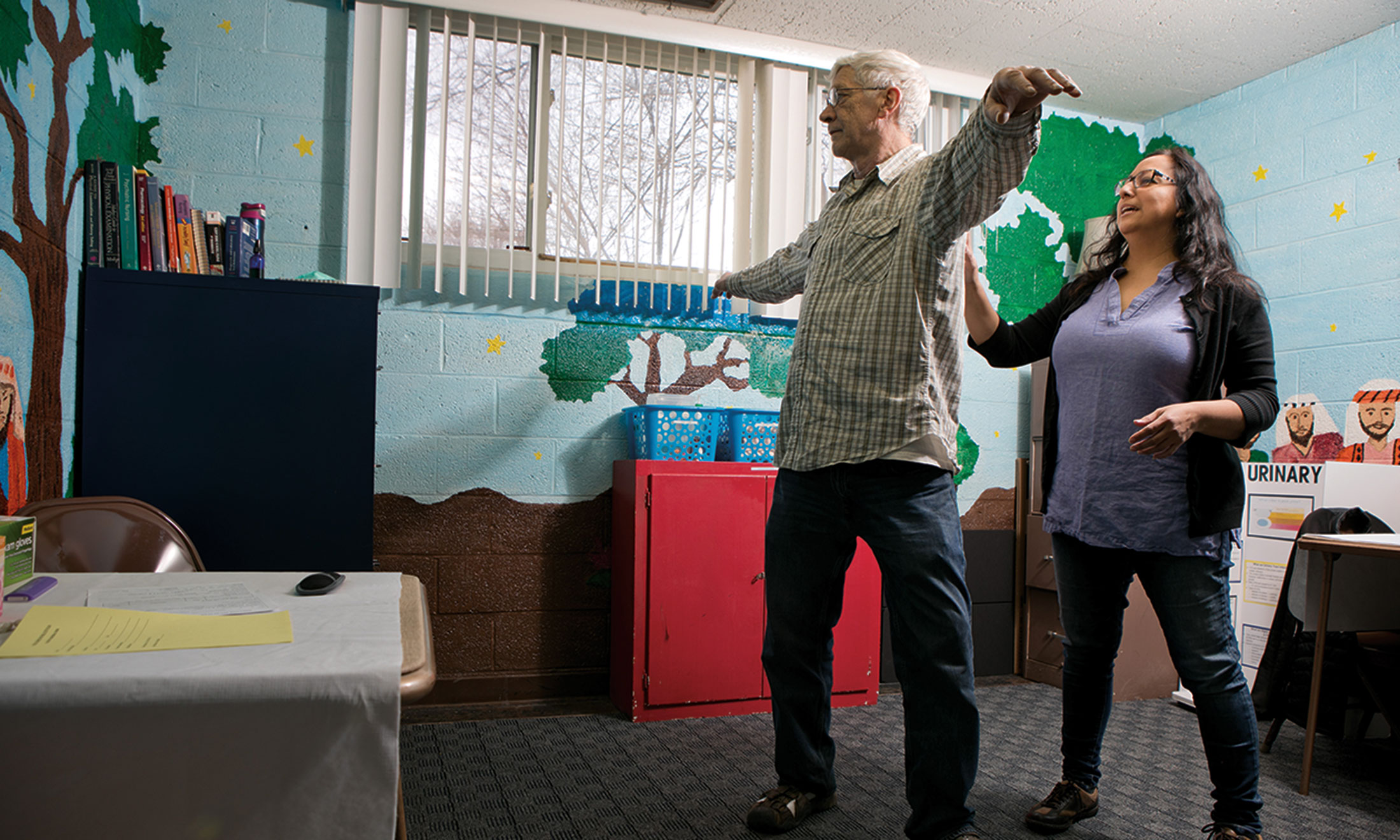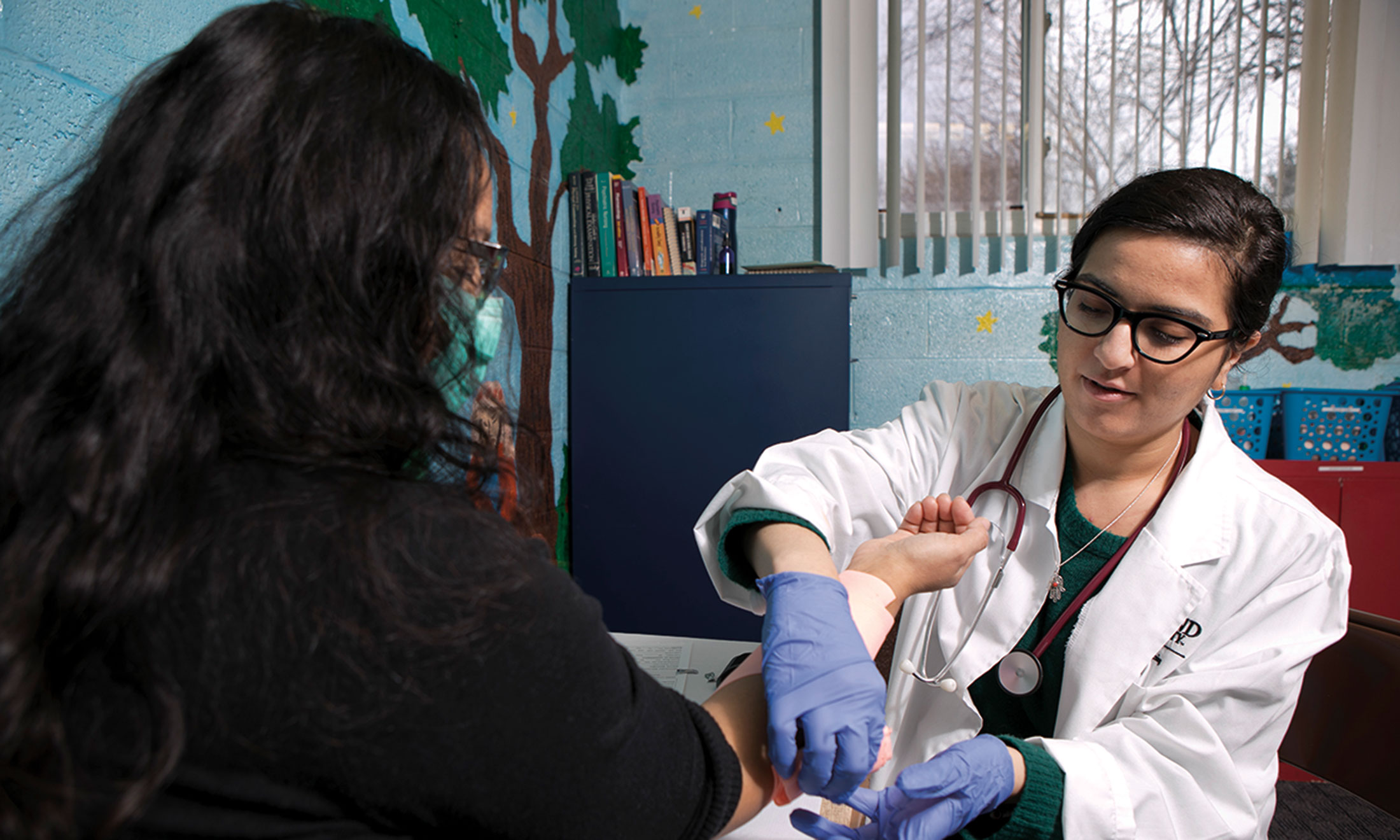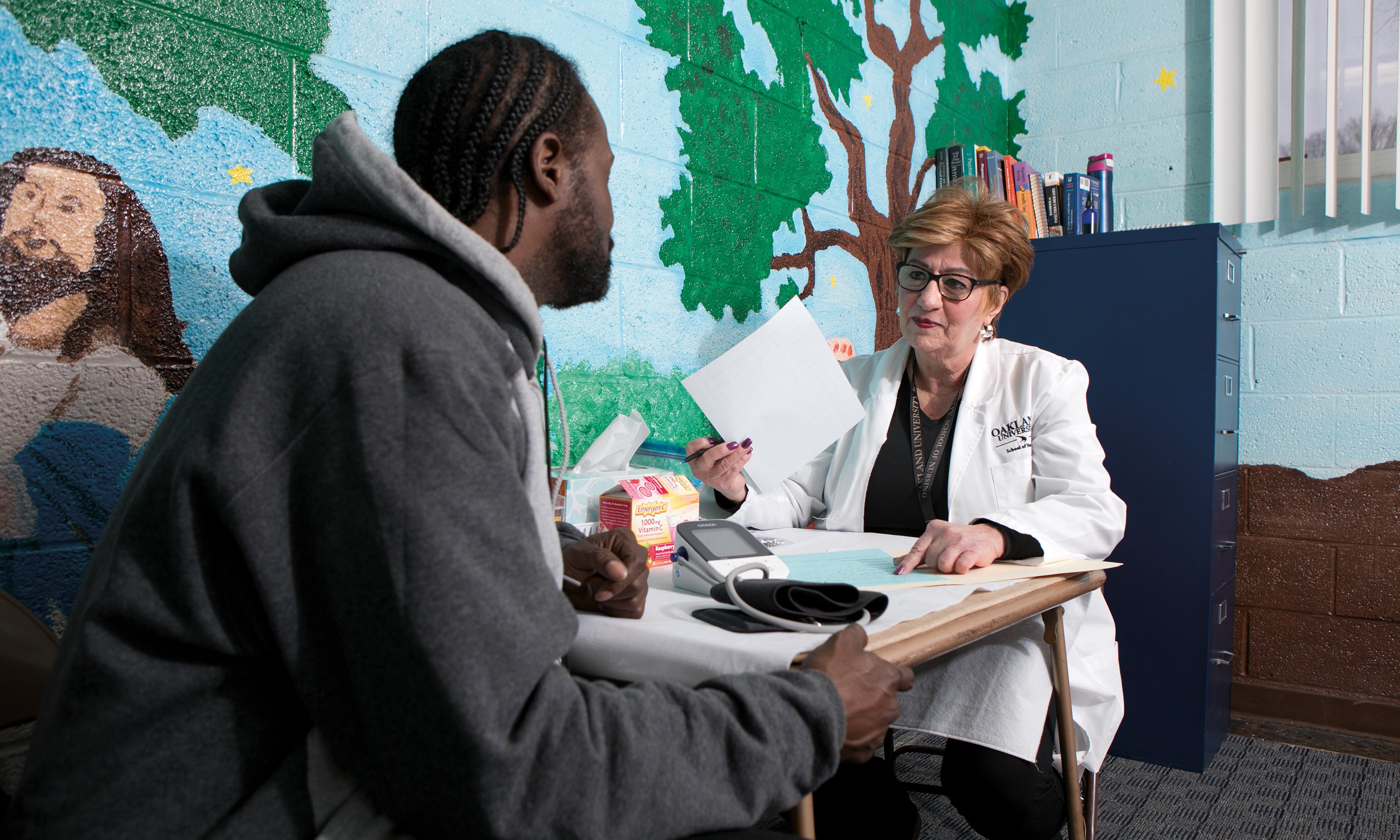- YouTube
- TikTok
Since launching a program that offers free health care for the homeless 14 years ago, Judith Fouladbakhsh, Ph.D., says her students have had to radically rethink their perceptions of what a homeless person looks like and has experienced.
“We encountered lawyers that are homeless, nurses that are homeless,” says Dr. Fouladbakhsh, an associate professor at Oakland University’s School of Nursing. “I think in community health people have a preconceived notion of what problems exist out there. This helps them to see that homelessness varies widely and it affects people across all economic levels.”

Dr. Fouladbakhsh started the Holistic Integrative Healthcare for the Homeless program when she was teaching at Wayne State University, and moved it with her to OU five years ago. She and her students primarily provide care to homeless guests at the Welcome Inn, a shelter program currently based in Royal Oak and established by the nonprofit South Oakland Citizens for the Homeless. However, Dr. Fouladbakhsh has worked with other shelters as well, and last year established a new partnership with Pontiac-based Grace Centers of Hope.
Dr. Fouladbakhsh and her students provide a wide variety of services through the program at Welcome Inn. They treat many conditions in an onsite nurses’ clinic, while more serious conditions are referred to local hospitals or EMS. They also provide supportive, complementary healing services for stress and pain management including yoga therapy, with one-on-one consultations and classes, and energy therapies such as healing touch and reiki.
| Also part of the Holistic and Integrative Nursing Team at Welcome Inn are two yoga therapists-in-training, who have provided invaluable care with a focus on pain and stress management. Yoga therapy is a part of the system of complementary and integrative healing modalities that can help foster well-being through simple, effective and adaptive physical movements, breathing and relaxation techniques. |
“We focus on primary prevention,” Dr. Fouladbakhsh says. “Let’s provide some stress relief and maintenance for people who are in very stressful situations.”
OU students volunteer to participate in the program, some to do research for their capstone projects and others just because they’re seeking extracurricular community service. Julian Smith fell into the former camp while completing his Bachelor of Science in Nursing at OU last winter. He describes the experience as “eye-opening.”
“What struck me was how I initially had perceptions that homeless people had done certain things and made bad decisions, and then they end up on the streets,” he says. “But based on my research and my interactions with people, the reality is that bad things can happen to anybody at any time.”
Dr. Fouladbakhsh usually has two to four student volunteers for the program per semester, but she hopes to expand that number when the School of Nursing begins requiring clinical experiences for its students in fall 2020.
“Nurses that may never work a day in community health should get to know their patients, because they may be caring for someone that’s homeless and not even realize that,” Dr. Fouladbakhsh says. “They become more open-minded about understanding the individual and the individual’s situation.”
Discover more nursing community service opportunities.




 June 23, 2020
June 23, 2020 By Patrick Dunn
By Patrick Dunn
